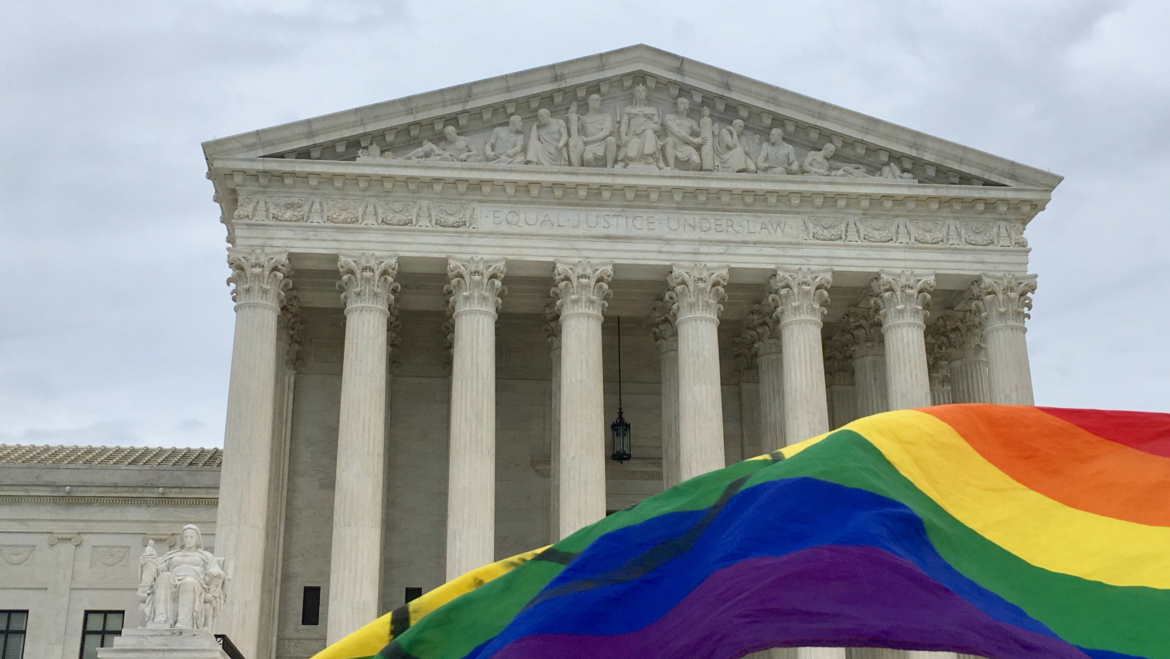“All human beings should be treated with respect and dignity and should be able to live without fear no matter who they are or whom they love.” —President Joe Biden
In the United States, the LGBTQ+ community and its allies celebrate Pride month in June and LGBTQ+ history month in October. Both months are a time to celebrate historic achievements of progress, to remember those who have been lost, and to remind us all that the struggle for basic rights for the LGBTQ+ community is far from over. In February 2021, President Biden released a Memorandum reaffirming the United States’ commitment to protecting the human rights of lesbian, gay, bisexual, transgender, queer, and intersex persons around the world. As the end of the year approaches, Cloudburst would also like to reaffirm our commitment to embracing diversity, strengthening community and government capacity to address vulnerability, building resilience, and creating lasting impact when responding to development challenges. This goal requires a commitment to advancing LGBTQ+ rights in order to promote a more inclusive, equitable, and diverse society for all individuals.
Historically, LGBTQ+ communities have been at the forefront of advocating for meaningful social change. While great strides have been made globally, many LGBTQ+ people continue to face extreme levels of discrimation and violence simply based on their sexual orientation or gender identity.
The struggles of the LGBTQ+ community are often aggregated into a single group or focus, neglecting the complexity of actual lives lived and the diversity of LGBTQ+ communities across the globe. While some rights have been won for the community as a whole, such as marriage equality in 29 countries, several groups within the community continue to struggle against discrimination and marginalization. Basic human rights such as access to proper healthcare, education, employment, housing, and fair justice systems are not guaranteed for many communities, including LGBTQ+ persons of color, transgender persons, and older persons.
- Last year, 8% of transgender adults in the U.S. experienced homelessness (The Williams Institute, 2020).
- Among sexual minority adults, African American respondents had significantly higher rates (6%) of recent housing instability.
- Older LGBTQ couples, especially older lesbian couples, experience higher rates of poverty (9.1%) than older heterosexual couples (4.6%) (Center for American Progress, 2009).
- A recent study showed that 17.6% of LGBTQ people with disabilities and 12.5% of LGBTQ people of color need and receive public housing assistance, compared to 2.5% of non-LGBTQ people (Center for American Progress, 2018).
- LBT women are five times more likely than non-LBT women to experience violent victimization.
- LGBTQ youth are 120% more likely to experience homelessness. (Missed opportunities: Youth homelessness in America. National estimates. Chicago, IL: Chapin Hall at the University of Chicago).
- Despite having similar rates of mental health disparities, Black LGBTQ youth are significantly less likely to receive professional care. (The Trevor Project, 2020).
The struggle for LGBTQ+ people to live a dignified life is often exacerbated by multiple intersectional traits. The data above shows how some identities in the LGBTQ+ community might see better access to equality while others (especially transgender persons and LGBTQ+ persons of color, disabled persons, and older persons) face additional barriers or hardships that are erased by aggregating the community as a whole.
While there are some federal rights and protections for LGBTQ+ people, data also shows that even when legal equality is achieved, progress is often slow to reach the most vulnerable populations. Through the lens of housing in the U.S., one can examine how race, citizenship, ability, gender identity, and geography can intersect to impact the lived experience of LGBTQ+ people and their ability to fully benefit from legal protection.
For example:
- Only 21 states, including the District of Columbia, have housing nondiscrimination laws that cover sexual orientation and gender identity.
- LGBTQ+ older adults face discrimination in the sale and rental of housing as well as in mortgage lending, which adversely impacts access to housing. One study found that 48% of older same-sex couples applying for senior housing were subjected to discrimination (The Equal Rights Center, 2014).
- Same-sex couples and and transgender people experienced discrimination in rental housing searches, even in areas with antidiscrimination protections.
- According to representative data from 35 states, nearly half (49.8%) of LGBTQ+ adults own their homes, compared to 70.1% of non-LGBTQ+ adults (Conron, 2019).
- Among transgender people, rates of homeownership are even lower: an analysis of the first nationally representative sample of transgender adults found that only one fourth (25%) are homeowners (Meyer et al., 2019).
- Black, White, Asian, and other-race LGBTQ+ people have statistically significant higher poverty rates than their same-race cisgender straight counterparts. For example, 30.8% of Black LGBT people live in poverty, whereas 25.3% of Black cisgender straight people live in poverty (The Williams Institute).
- According to a National Transgender Discrimation report, “of those who have transitioned gender, only one-fifth (21%) have been able to update all of their IDs and records with their new gender” (The National Gay and Lesbian Task Force and the National Center for Transgender Equality, 2011).
- There are approximately 1 million LGBTQ+ immigrants in the U.S.—and 30% are undocumented (lgbtmap.org).
The few examples above illustrate how different social identities can create overlapping systems of privilege or oppression. The ways in which these identities interact in the real world can impact one’s access to legal protection, healthcare, homeless services, and basic social services and significantly impact one’s ability to achieve upward mobility. Using an intersectional and historical approach to understanding the diverse realities of LGBTQ+ people can help set a foundational framework for creating a more inclusive world where change is not reserved only for select groups of people.

